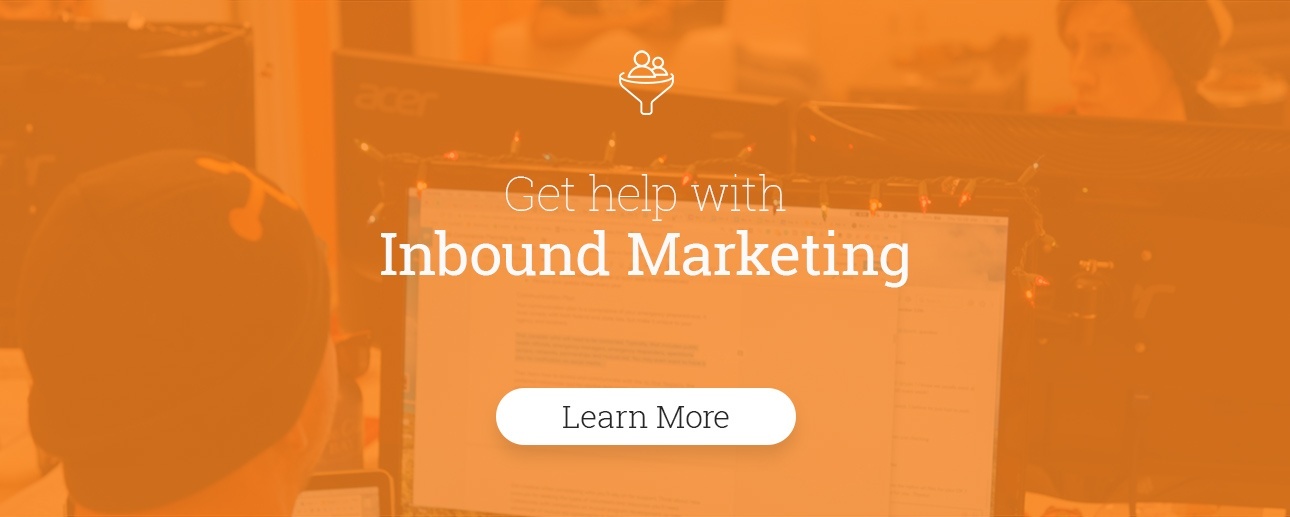HubSpot states there are five core services in the inbound methodology. Since these were mostly designed for lead-generation websites, how does e-commerce work with the inbound marketing framework? Here at Impulse, I expanded our digital library with an article explaining how each of the core inbound methodologies can apply to e-commerce.
ATTRACT, CONVERT, GROW, DELIGHT, ANALYZE
#1 : Attracting More Qualified Leads
Yes, your focus should be on driving more traffic to your website, but not all traffic is created equally. Qualifying your visitors is a very important step in filtering true sales from the stale shoppers. Building your website to follow SEO best practices and purging pages that don't drive traffic or revenue are perfect strategies for landing pages and website, but how do they translate to e-commerce?
Start by optimizing your categories, product tags and search relevance but don’t stop there. Expand your keyword footprint! Identify “keyword gaps” and build additional foundational pages. Implement a content strategy to target potential customers in all stages of the buying cycle.
At minimum, closing more qualified visitors takes a combination of a solid SEO foundation (website), foundational content writing (category/product descriptions and pages), strategic content creation (blogging), as well as social media promotion and management.
#2 : Converting Visitors to Leads
With a typical website, a contact or newsletter form is all you'll need to convert visitors into leads. With e-commerce on the other hand, we're building a profile of your visitor, and defining the type of products he or she prefers, long before they purchase.
Before we get too deep into the lead conversion of your e-commerce shop, lets first define what a lead IS for an e-commerce website.
It’s certainly argued that a visitor is a lead, or is it? Visitors are tracked during their visit to your site with browser cookies and targeted on a number of ad platforms. Heck, you can even engage with them using AI bots or directly with Facebook Messenger. But does that make them a lead? No, and here is why: a visitor can leave your site at any time and never come back, but a lead is captured and followed up with as an interested customer. So essentially, a visitor becomes a lead when they fill out a form or provide personal information to your website. That information is typically an email address which may or may not be accompanied with other info such as a name or phone number, etc.
So how does an e-commerce website convert real leads, better?
Using a mail service provider, such as MailChimp or AWeber, will allow you to set-up automated workflows that generate entire list of new leads based on different factors such as abandoned cart shoppers, most frequented buyers, top spenders and more. Target these different types of leads with custom actions or workflows that are automatically triggered by specific actions the lead can take on your e-commerce website.
#3 : Converting Leads into Customers
So you've made it this far, with your lead lists filling up and site visitors converting into leads. Now what? Having a marketing automation platform like HubSpot in place will help you to nurture leads and create a healthy e-commerce marketing funnel.
Without marketing automation, your job is going to be a little tricker, but you can still convert those leads into customers. Start by asking yourself a few questions:
- Are you collecting email addresses?
- Are you segmenting your leads?
- Did you set-up automated workflows to target different lead types?
If you cannot answer "YES" to each of these questions, you're losing potential customers.
Use this small list of marketing automation ideas to start converting more e-commerce leads into real, paying customers:
- Drip Campaigns / Welcome Series / Onboarding
- Product Feeds & Recommendations (Sales Channels)
- Browse Abandonment Recovery
- Geo-Targeting Visitors
- Cart Abandonment
According to Baymard Institute, a UK-based web research company, 69.23% of online shopping carts are abandoned. Imagine if you could turn that nearly 70% statistic into customer sales. That would be huge!
#4 : Turning Customers into Promoters
Now that the customers and sales are flowing in, it’s time to turn them into loyal brand promoters: people happy to promote your brands on social media or directly to friends and strangers.
The trick is figuring out a way to “WOW” your customers, make an impression in their life or solve a problem. Using a marketing automation platform, like HubSpot, can help simplify and boost this process for you automatically.
There are several easy ways to stay in front of your e-commerce customers by using marketing automation:
- Post-Purchase Life Cycles– Send personalized, timely messages with CTAs.
- Predictive Replenishment Campaigns– Remind customers of their frequent purchases.
- Re-Engagement Campaigns– Are you at risk for losing a customer? Re-engage them.
- Incentivised Retention Automation– Incentivise your best customers.
These are just a few of the strategies used to turn first-time buyers or existing customers into repeat customers and increase your CLV or customer lifetime value. But we still haven’t converted these customers into raving promotion machines. Combining any of the above tactics with outstanding customer support will certainly drive you in the right direction.
Another great way to build praise is through your own organization. Don’t be afraid to educate your staff and incentivise them to properly promote your brand online. A happy employee will promote you in and out of business hours, with a brightness that shines through referrals.
#5 : Measuring, Analyzing and Interpreting
So now the gears are oiled and the money is funneling in. But how do I know for sure my e-commerce inbound strategy is actually working? Analytics and measuring.
There are many ways to gather reports and filter your visitor data. It can be quite overwhelming for the first time e-commerce shop owner, but after some minor tutorials and content perusing, you could easily read, measure and forecast sales efficiencies to find out which products are selling the most through your marketing automation channels.
It doesn't have to be as complicated as it sounds, if you use some awesome tools:
Dashboards in Google Analytics is a great way to combine data on a one-screen layout that shows the varying degrees of visitor marketing data and depths of the sales marketing funnel.
DataBox is another great analytical tool we use at Impulse Creative, to create dashboards that target the key data points on our e-commerce websites.
If you're looking for more information on dashboards and best practices, check out this article from Avinash Kaushik, with more than 4,000 words of great advice.
In conclusion, while as helpful as I hope it was, please realize this article only scratched the surface of all five core service areas within the inbound methodology.
Impulse Creative is happy to dive deeper and answer any questions you might have. Click the Inbound Marketing button below to learn more about your marketing service that can transform your website.





